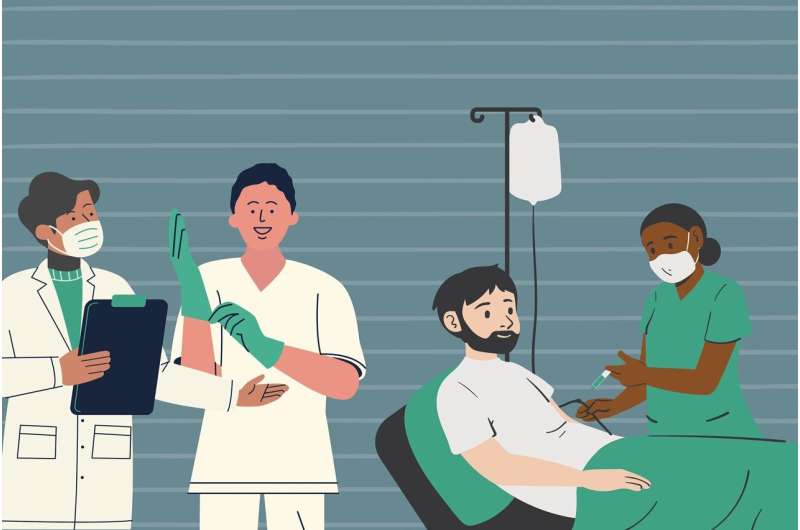Credit: Pixabay/CC0 Public Domain
An international validation study found that the Canadian Syncope Risk Score (CSRS) showed good performance in the identification of patients at low risk for serious outcomes and, therefore, could potentially be discharge from the emergency department (ED). While the CSRS was also found to be superior to the Osservatorio Epidemiologico sulla Sincope nel Lazio (OESIL) risk score, its clinical utility remains uncertain without further research. The findings are published in Annals of Internal Medicine.
Syncope is often benign, but some causes can be life threatening. The lack of accurate risk assessment for syncope leads to hospitalization in up to 80% of patients, with associated medical costs exceeding $2.4 billion annually. Several risk scores have been developed to assist emergency department staff triage patients, but none have been widely used in clinical practice.
The CSRS was developed as a decision tool to be used after emergency department assessment to identify patients who are at low risk for serious outcomes after 30 days. Initial validation of the CSRS demonstrated high prognostic accuracy, but other validation studies showed only moderate performance. The CSRS has not yet been compared to a validated syncope risk score, and the performance and utility outside of Canada remains unknown. It is also unknown whether the CSRS allows for the prediction of serious outcomes beyond 30 days or how well the CSRS predicts a composite of only serious clinical outcomes rather than the previously used composite that also included procedural interventions.
Researchers from the University of Basel, Switzerland, studied 2,283 patients aged 40 years or older who presented to the emergency department within 12 hours of syncope to externally validate the CSRS and compare it with another validated score, the OESIL score. Patients were selected from 14 hospitals in 8 countries and were evaluated with both the CSRS and OESIL scores with follow up at 6, 12, and 24-month intervals after discharge. The authors found that the CSRS was good for predicting adverse clinical outcomes. They also found that, by applying the CSRS, more than half of patients (60.8%) were triaged to the low-risk group, in whom hospitalization often may not be necessary. In contrast, after presenting at the emergency department, more than 1 in 3 patients in this low-risk subgroup were hospitalized. Less than 1% of patients identified as low risk by the CSRS had adverse clinical outcomes at 30 days. However, the researchers also noted that the clinician classification of syncope at emergency department discharge may explain the superior performance of the CSRS in this study. According to the authors, the incremental value and clinical utility of the CSRS remains unclear and warrants further study.
More information: International Validation of the Canadian Syncope Risk Score, Annals of Internal Medicine (2022). DOI: 10.7326/M21-2313. www.acpjournals.org/doi/10.7326/M21-2313
Journal information: Annals of Internal Medicine
Provided by American College of Physicians
























